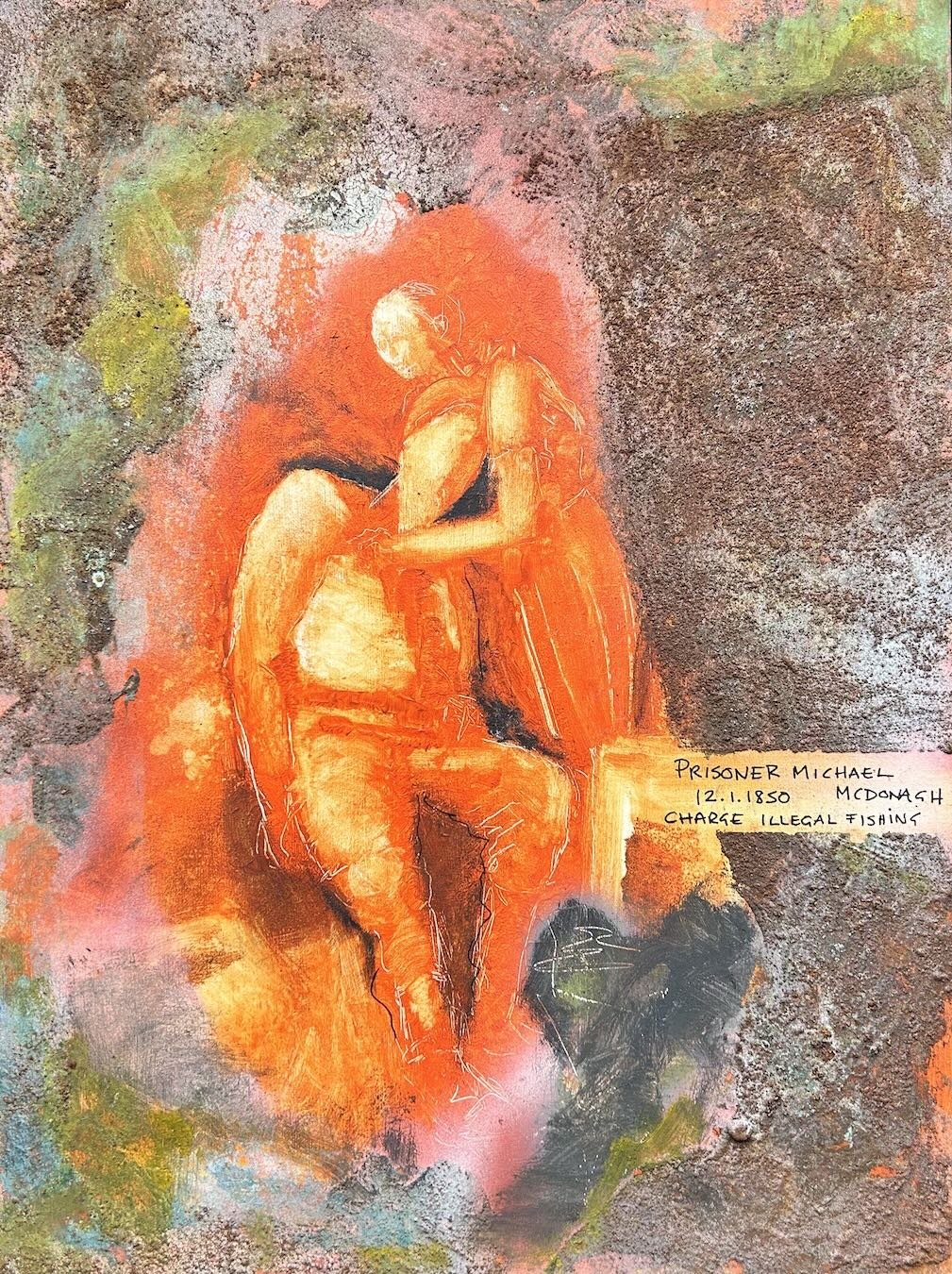Meeting with Artist Tracy Sweeney
A journey through ancestry and art.
In my recent exploration of ancestry, I uncovered a story that brought Ireland’s history vividly to life. My great-grandfather, during the Irish Famine, was sent to prison in 1850 for poaching fish—a desperate act to support his family to survive during one of the most devastating periods in Ireland’s past.
The Famine, lasting from 1845 to 1852, was not just a natural disaster but a crisis worsened by a harsh socio-political landscape under Queen Victoria’s reign. British policies, grounded in “laissez-faire” economics, allowed food to continue being exported from Ireland even as its people starved. Many officials in Britain harboured prejudices that painted the Irish as lazy or incapable, reinforcing their reluctance to provide substantial aid. Destitute families had little recourse but to enter workhouses, infamous for their squalid conditions, or to face the difficult choice of emigration. This dark period left over a million dead and another million forced to emigrate, leaving deep scars on Ireland.
During a museum visit in Paris, I was struck by Théodore Rousseau’s The Wounded Poacher, which reminded me of the hardships faced by my ancestors.
Inspired by this, I created my own interpretation while attending an experimental course at the Newlyn School of Art, channeling my personal connection to this history into my work.
It was through this journey of historical and artistic exploration that I discovered the Irish artist from Co Mayo, Tracy Sweeney.
Her work delves into similar themes of ancestry, heritage and survival, so I reached out, and we arranged to meet. On a dry, crisp day in late September, I traveled to meet her, with some anticipation. But it was a feeling that didn’t last long as Tracy welcomed me warmly, and before our first cup of tea was finished, we were deep in conversation about our shared passion for telling the stories of our ancestors, many of whom had no choice but to leave Ireland to escape the workhouse.
Tracy’s dedication to her craft was inspiring; her studio, like mine, is filled with photographs of abandoned buildings—haunting relics that evoke lives once lived.her paintings are beautiful and combine both figurative and abstract elements expertly.
While our starting points differ, we share a common goal: to use art to honour our shared history. Tracy generously shared insights into her work, encouraging me to explore my own path in telling these stories. By the end of our visit, I felt renewed in my mission to use art to bring these histories to life, honouring the resilience of those who came before us.

